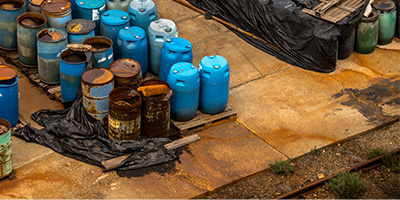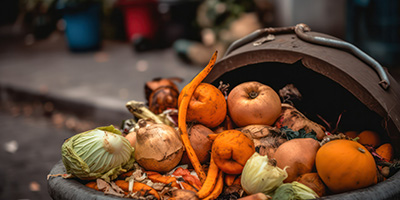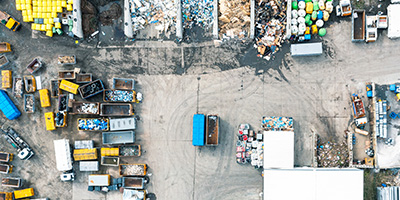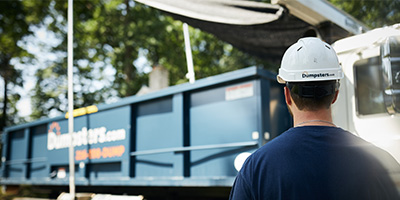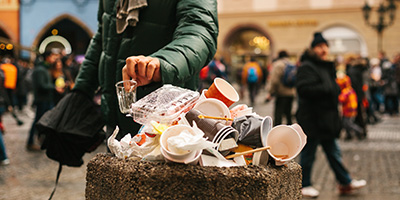Green Landfills: Keeping Up With U.S. Waste Disposal Rates
Green waste landfills are a key way to protect the environment by helping to reduce methane gas emissions.
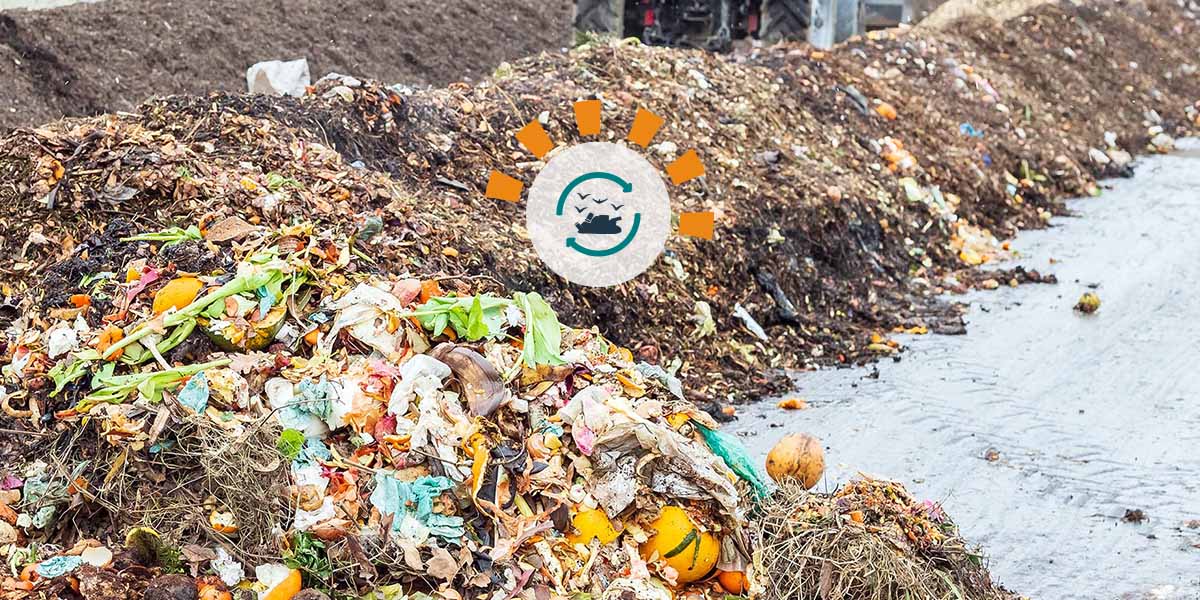
The Rise of Compost Landfills in the 21st Century
The United States is facing a waste crisis. Americans are generating trash so quickly that standard municipal waste landfills are running out of space. While recycling rates have been increasing, there are still nearly 200 million tons of waste entering the landfill each year.
Wouldn’t it be great if there was a way for Americans to divert nearly a quarter of its municipal solid waste (MSW) landfill production while also helping protect the environment? Luckily, green waste landfills are an emerging trend that will do just that.
We spoke with April Mandusic at Recycle Coach to learn about the importance of composting landfill sites.
Green Landfill FAQs
What are examples of green waste?
Green waste is any organic material. Yard trimmings, weeds, tree branches, flowers and leaves are all examples of green waste you’d find outside. Examples of food waste that can be composted includes fruits, vegetables, coffee grounds and tea bags.
Items such as bodily fluids, animal droppings and hair trimmings may be organic, but they are biohazardous waste and are not considered green waste.
How is green waste treated at the landfill?
Often, green waste is simply left to sit at the landfill or facility. Exposure to the air allows for bacteria to help break the material down into fertilizers that can be re-introduced to the environment full of nutrients.
Do compostable bags break down in landfills?
Yes. Compostable bags break down in both MSW and green waste landfills. However, it's best to send your bags to a composting landfill where the contents will be properly handled. When organic material goes to a MSW landfill, the gases are trapped and can harm the environment.
Does compost decompose in a normal landfill?
Yes and no. While the organic waste will decompose, the gases that would normally be released are trapped. This buildup causes those gases to become a danger to the environment once released. So, while green waste will naturally decompose in a normal landfill, it’s better that the materials have breathing room in a green waste landfill to help protect the environment.
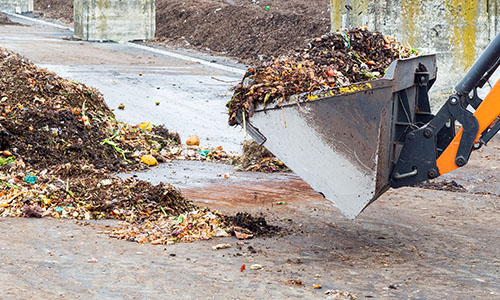
What Exactly Is a Green Waste Landfill?
In its simplest form, a green waste landfill is a place where your organic waste is taken to naturally decompose and turn into compost. You won’t really notice much difference from your typical MSW landfill if you visit to drop your own compostable waste off. At a glance, it’s just like any other facility that accepts waste. The true difference between green waste landfills and other types happens behind the scenes.
How Does a Compost Landfill Work?
After you or your curbside collection company drops off your green waste, it’s taken to the yard where it’s sorted into rows. This is when workers will go through and remove as many visible contaminants as possible, such as treated wood, plastic bags and other non-biodegradable materials.
Then, we wait.
The green waste will sit for months as it naturally decomposes. From time-to-time, a machine called a compost turner will drive over the piles, rotating the materials to ensure proper airflow.
After a couple months, the decomposing waste is taken to a grinder where it’s broken into smaller pieces before being placed back into a pile to sit for another two to six months.
Once the process is complete, the green waste can be re-introduced to the environment as a nutrient enriched mulch or soil.

“Methane is significantly more detrimental to the atmosphere than carbon dioxide byproduct, so anything we can do to lower methane emissions is a step towards helping our environment. Keeping green waste out of MSW landfills is essential.”
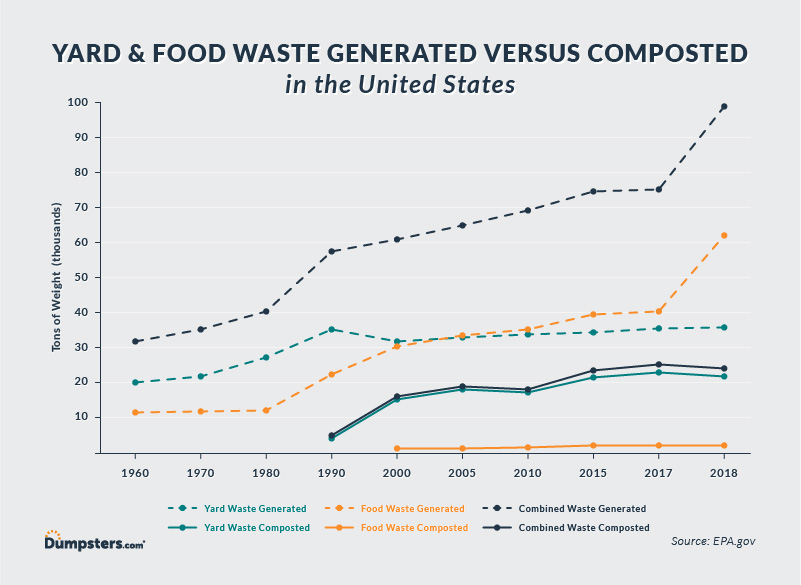
How Green Waste Dumps Help the Environment
According to the EPA, in 2018 the United States generated 292.4 million tons of waste. Of that, 98.5 million tons were green waste. Now, if all of that organic waste had been composted at a green waste landfill, it wouldn’t be a problem.
Unfortunately, that was not the case.
Just under 24.9 million tons — or 25.3% — were composted. That means 45.8 million tons were still sent to the landfill.
Aside from the fact that naturally decomposing materials are taking up valuable space in the MSW landfill, Mandusic points out that the impact on the environment could be even more problematic.
“Green waste, such as yard or food waste, produces gas as it decomposes. In a landfill, green waste is buried and loses access to oxygen so it will release a large amount of methane gas, resulting in high greenhouse gas emissions,” Mandusic said. “With organics programs and composting, the natural decomposition of this same green waste will include oxygen where methane gas is no longer a byproduct.”
While there is still carbon dioxide that enters the atmosphere as a result of natural decomposition, it is far less impactful on the environment.

“Even if your local government does not yet have an organics recycling program, you can still combat greenhouse gas emissions from food waste by starting a compost bin of your own. Composting can be quite easy and can be done in your backyard, or in small amounts on your countertop.”
Just how much worse is methane for the environment than carbon dioxide? Studies have found that methane can be 26 times more detrimental to the atmosphere. Plus, it’s believed that if composting and green landfills became the standard instead of the alternative for organic matter, greenhouse gases due to waste management could be reduced by up to 50%.
Upgrade Your Composting Game
Green waste landfills are here to stay. How immediate of an impact they can have, though, is up to us.
“Average citizens always have the vantage point of making their voice be heard in local government,” Mandusic said. “Reach out to your local government, attend townhall meetings, call, email, ask questions and tell them why you think a green waste recycling program would benefit your area.”
If you’re ready to get started, even a small step such as starting your own at-home compost pile will go a long way.
Expert Contributors

April Mandusic
April Mandusic is the Educational Specialist at Recycle Coach. April is a licensed educator who has moved her teachings from the classroom to the virtual world. She teaches residents how to recycle correctly through blogs on the Recycle Coach website and through interactive content on the Recycle Coach mobile app.
April is passionate about topics in the areas of sustainability, waste reduction, and of course recycling. She spends most of her free time having adventures with her family and is also an avid crafter and artist.
Other Sources
Green Waste Management in Australia. (2020, March 08). Retrieved from MetropolitanTransferStation.com
Compost vs. Landfill – What Happens to Compostable Items in a Landfill? (n.d.). Retrieved from MoonshotCompost.com
What Happens After All the Yard Waste is Collected? (2018, November 26). Retrieved from YouTube.com
Yard Trimmings: Material-Specific Data. (n.d.). Retrieved from EPA.gov
Composting to Avoid Methane Production. (2021, October 15). Retrieved from agric.wa.gove.au
Talt, G. (2020, March 4) The ComPOSTer: How Much Can Composting Help in Solving the Climate Challenge? Retrieved from scraplab.princeton.edu
What Do You Think?
Does your hometown have a green waste landfill? We're listening. Head over to Twitter or Facebook,
and use #dumpstersblog to join the conversation.


